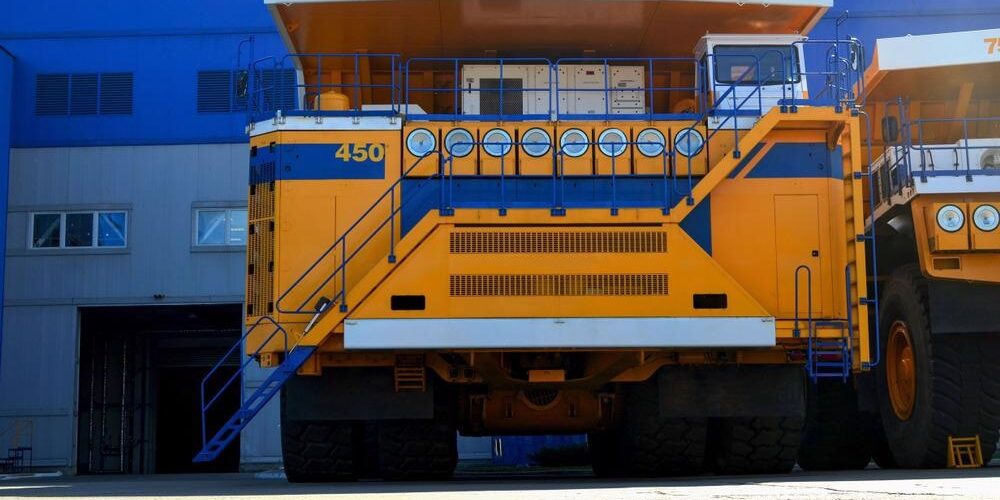How mining electrification will impact mine safety and machinery
In recent years, mine safety and the shift to clean energy have been major focuses for the mining industry.
As an industry that is generally quick to adopt new technology to improve efficiencies and workplace safety, the question of whether the industry can move quickly toward clean energy and electrification of mine sites remains unanswered.
Last year, State of Play, the largest mining platform on strategy and innovation globally, released a report on electrification and the importance for mine sites making the shift toward clean energy.
In the report, it was found that more than 60 per cent of mining executives believe that the next generation of mines will be fully electric. But it is a long road to reach this goal, with 49 per cent of mining CEOs believing that it would take existing mines on average 5-10 years to electrify.
So, what is the future of mining and how will electrification impact the industry and mine safety?
Benefits of mining electrification
Electrification, as the name suggests, is the process of using electric sources of energy to power mine sites instead of fossil fuels. Electrification is a hot topic within the mining sector with a range of benefits for the industry on the horizon.
One of the biggest benefits of mine site electrification is the removal of diesel and subsequently diesel exhaust emissions. Diesel exhaust produces harmful chemicals which can increase the risk of lung cancer, respiratory and cardiovascular disease in workers, according to Workplace Safety North.
By electrifying the mine sites, emissions would be cut down and worker exposure to harmful diesel exhaust particles would be reduced. And, as one of the largest industries for pollution, the move toward an electric future is promising.
Impact of electrification on mining machinery
A major factor in the electrification of the mining industry is the change to mining machinery. Generally, mining machinery are big diesel-powered machines, but the move toward electrification means that the industry would have to move toward alternative powered vehicles such as electric or hydrogen.
The Innovation for Cleaner, Safer Vehicles by the International Council on Mining and Metals (ICMM), is a promising initiative pushing for the acceleration of new-generation vehicles. The initiative sees 28 of the leading mining companies come together with 11 original equipment manufacturer (OEM) partners to develop and improve new generation vehicles. The initiative aims to:
- Bring greenhouse gas emission-free surface mining vehicles to the industry by 2040.
- Decrease diesel exhaust impact on workers by 2025.
- Make vehicle collision avoidance technology available to mining companies by 2025.
Equipment manufacturers like Caterpillar are already leading the way toward developing electric powered vehicles, with Cat announcing their first electric underground load haul dump truck in June, 2021. According to Cat, this machine is the start of the all-electric mine vision, and it will allow underground sites to reduce their dependence on ventilation systems.
Machines4U Founder, Steve Krebs, believes the move toward electrification will have a big impact on mining machinery.
“Mining machinery has long been diesel-powered, so the move toward electric is going to be a big shift.
“It’s going to take some time, but we expect to see an increase in new alternative powered mining machines listed on the platform in the coming years. A surge in used mining machines being listed is also a possibility as they will be phased out and no longer required by mines moving toward electrification,” Krebs says.
According to State of Play, 89 per cent of global mining executives believe that existing mines will become fully electric within 20 years.
What’s holding the industry back from electrification?
Moving toward electrification has great benefits however, it is no easy feat. Removing diesel and fossil fuel use in mines is a long process due to the diverse range of technical and financial challenges in mining.
There is also some uncertainty in which technology to invest in; especially when the full value of electrification requires a thorough plan in the mine design.
Another thing holding the industry back is the perception of risk from electrification. In the State of Play report on electrification, 63 per cent of respondents felt that risk aversion was holding back the implementation of electrification. This may simply be a knowledge gap and is perhaps a misplaced thought, but it is certainly a factor holding the industry back from moving toward a cleaner future.
Mine electrification will also require workers to upskill. In particular, data and digital literacy skills will be used across all phases of the mining value chain. This will be a key investment for mining companies.
Although there are some factors slowing the uptake of electrification in the mining industry, it’s promising to see the majority of leading mining executives on-board with electrification. After all, it will promote a cleaner future, and improve the safety of mines for workers.
![]()





